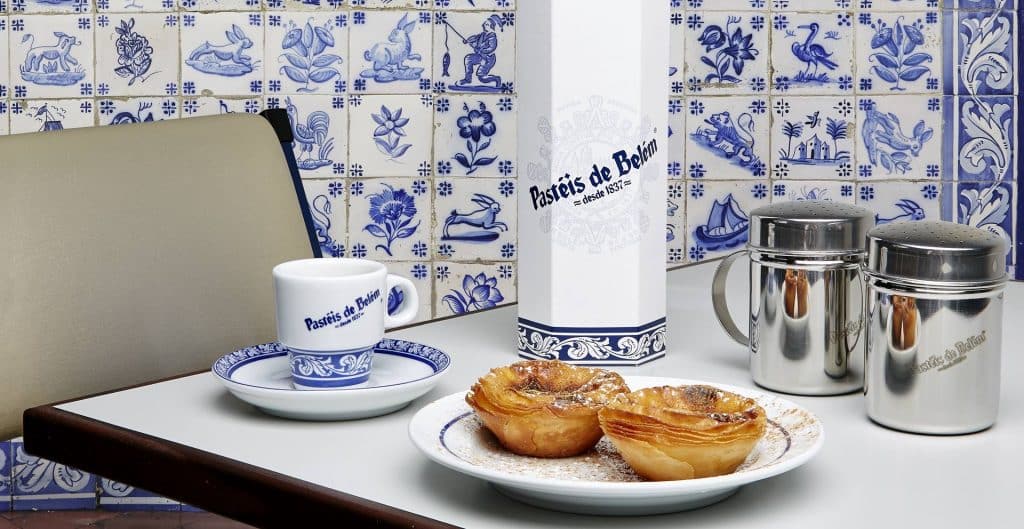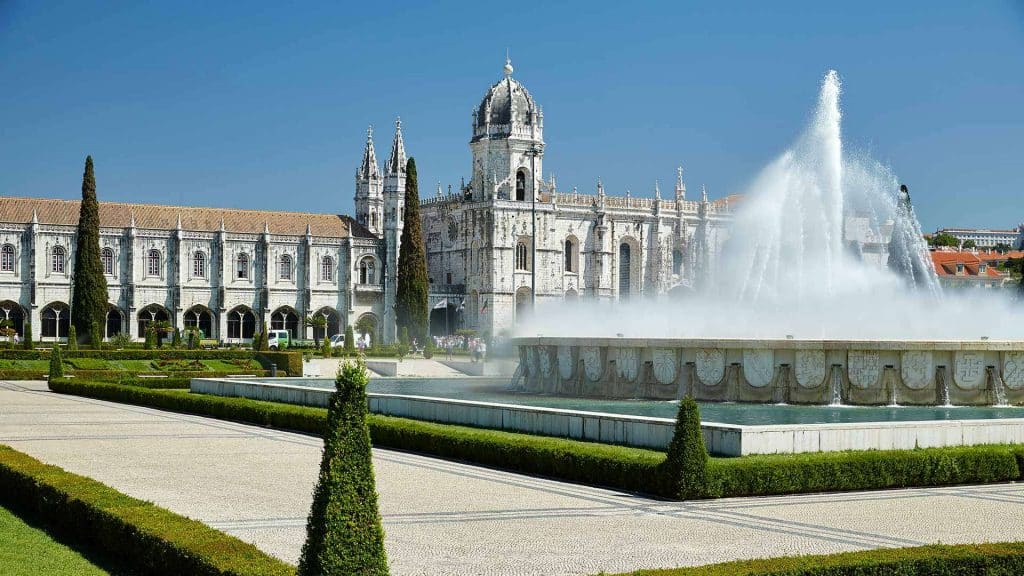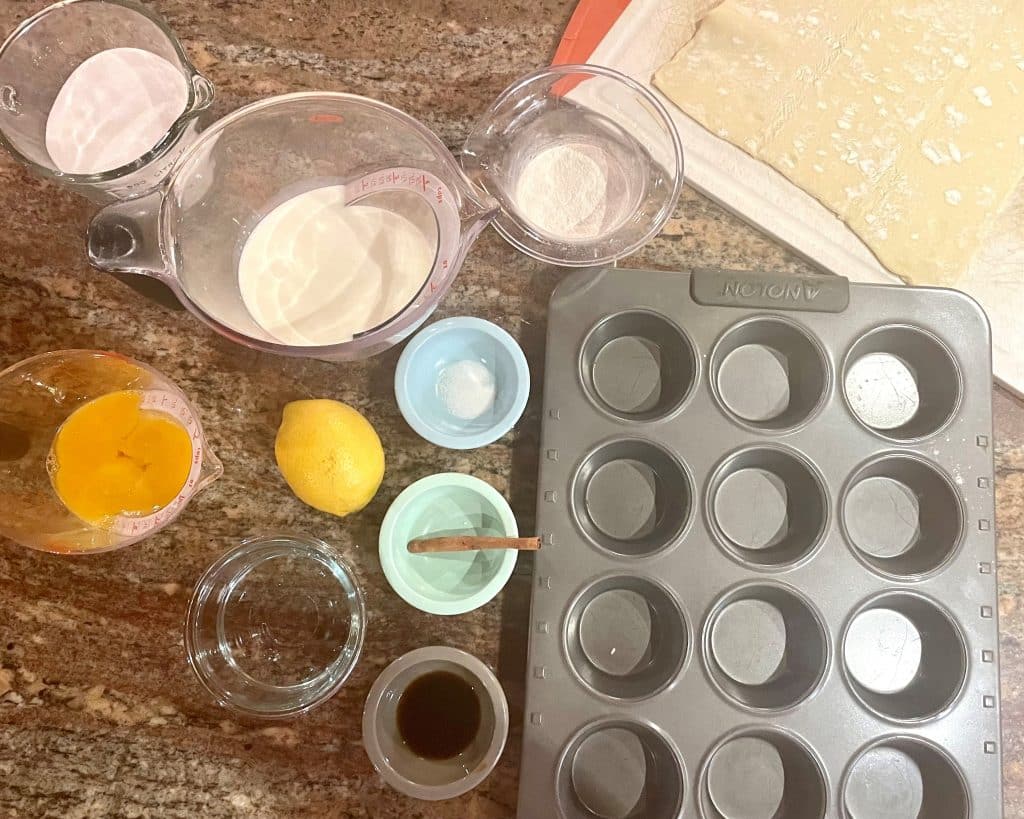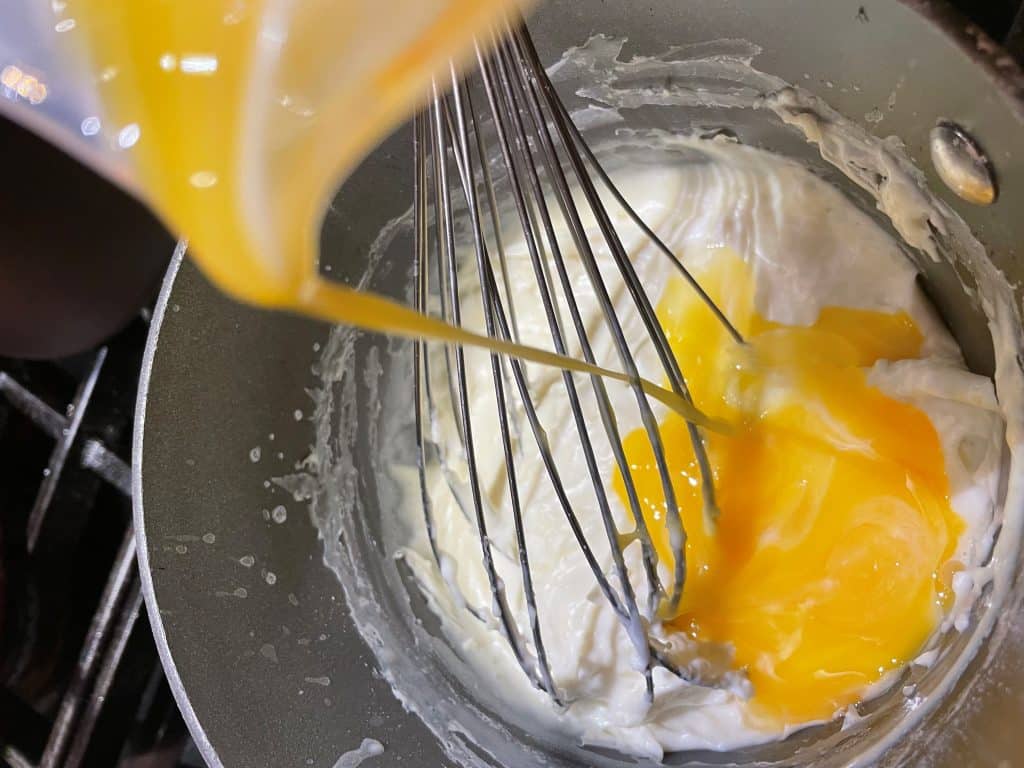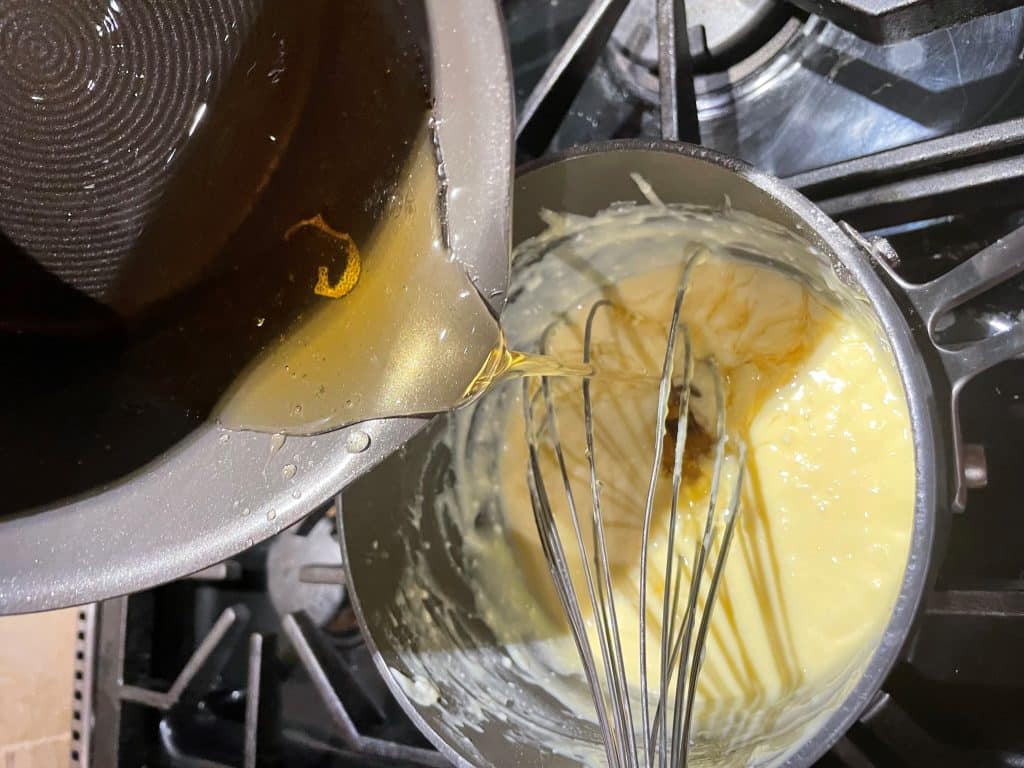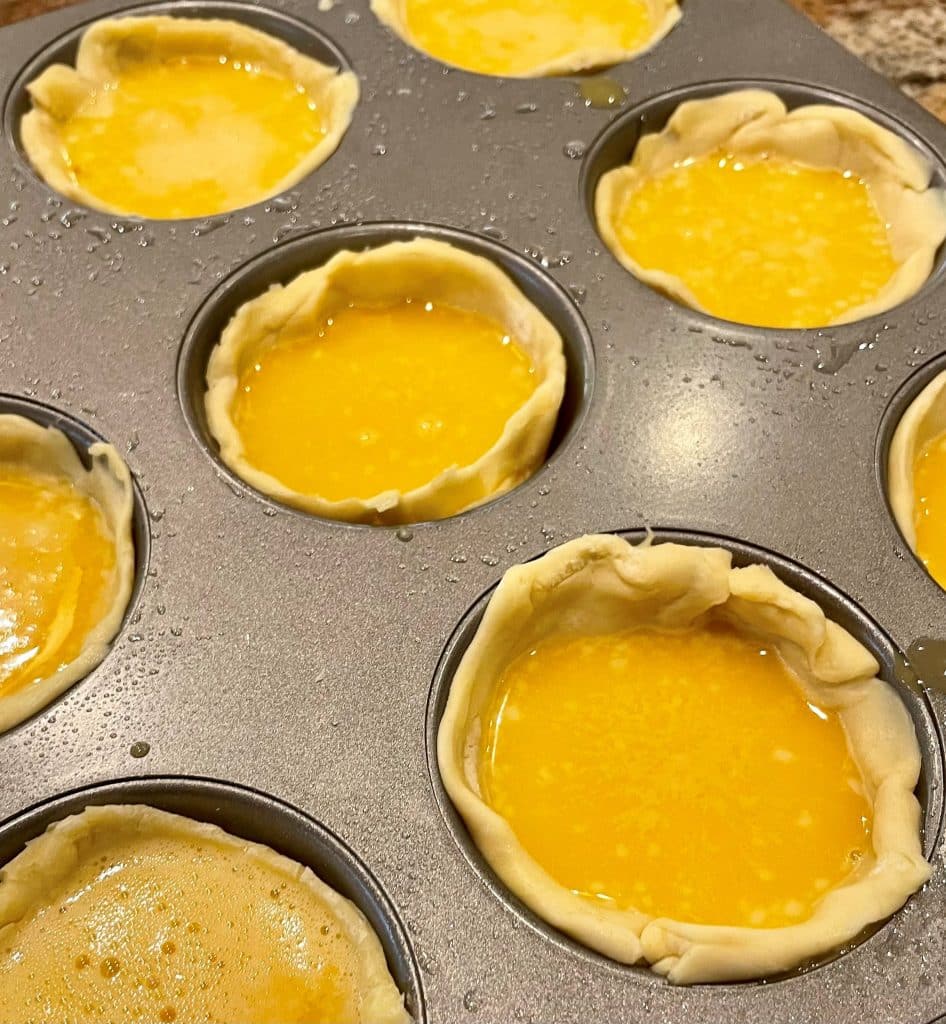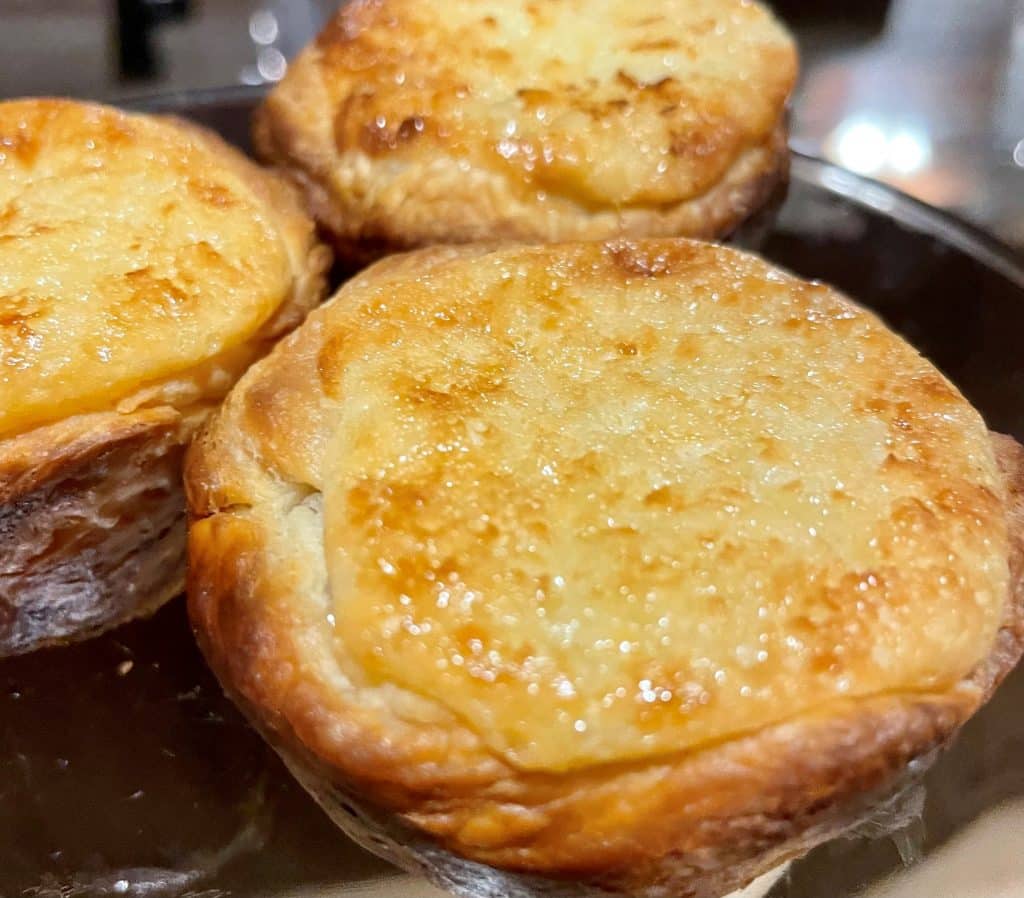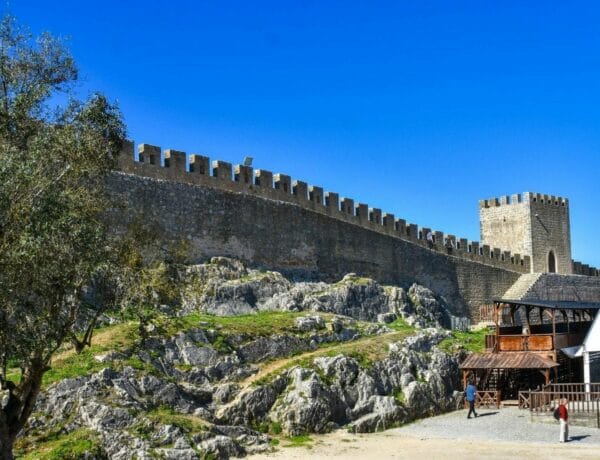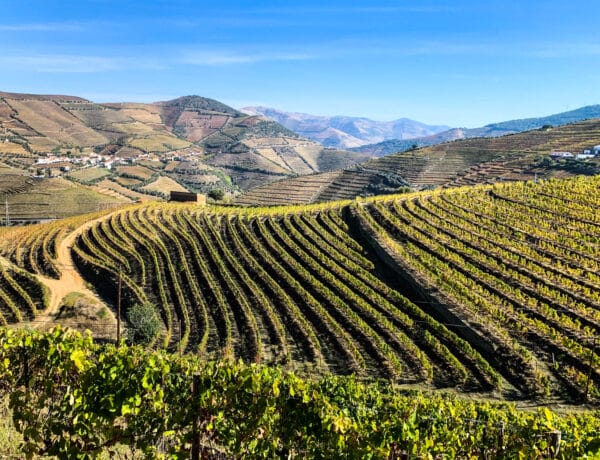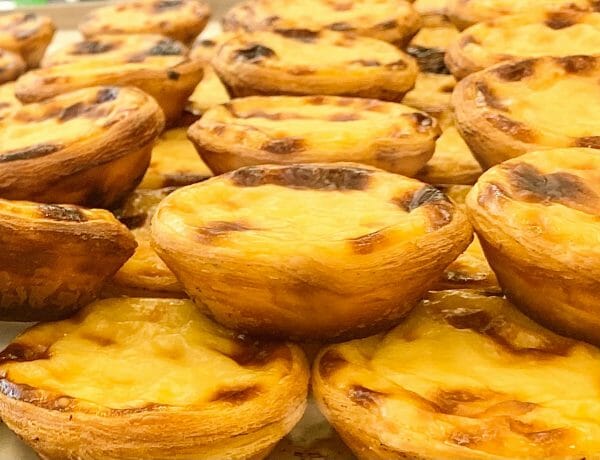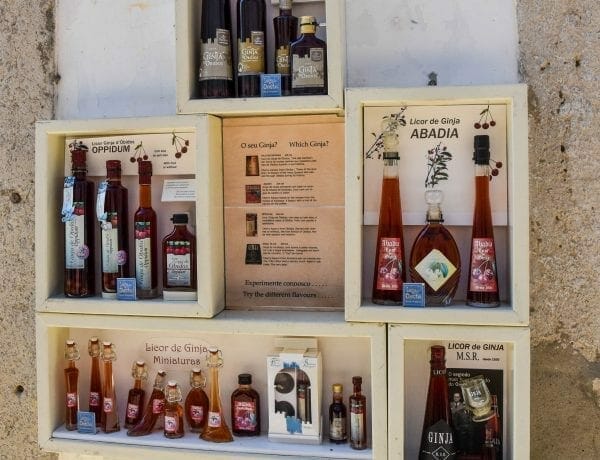Bringing Home Portugal’s Favorite Pastry
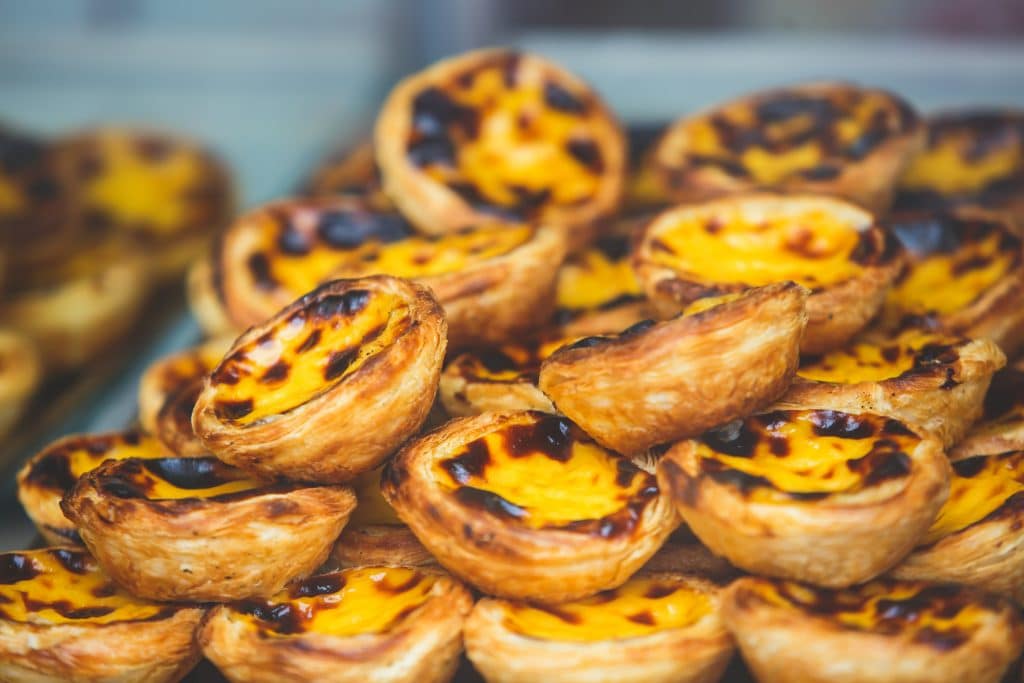

One of the most important ways to experience a culture is through food when traveling abroad. Our goal is always to learn the local specialties and seek them out. There is no doubt that the world-famous Pastel/Pasteis de Nata, a Portuguese egg custard pastry, is an absolute must in Portugal. It consists of crispy, flaky layers of pastry, which are then filled with a deliciously rich, creamy egg custard filled with a light dusting of cinnamon. The ingredients are simple: egg yolk, flour, sugar, milk, unsalted butter, vanilla extract, and cinnamon.
The story is told that these tarts originated because the Jeronimos monks used egg whites to starch their clothes, and, as a result, the leftover egg yolks needed to be used. The monks lived in the Jeronimos Monastery in Belem, home of a world-famous bakery selling these sweet gems. Here, they have referred to the tarts as Pasteis de Nata. The monks began selling them in the early 1800s after Portugal cut off funding for religious institutions. It didn’t work well, but before they closed the shop, they sold the recipe to a local sugar refinery. The refinery opened a bakery in Belem near the old monastery; the rest is history.
Our Experience in Portugal with these tarts-Porto and Lisbon
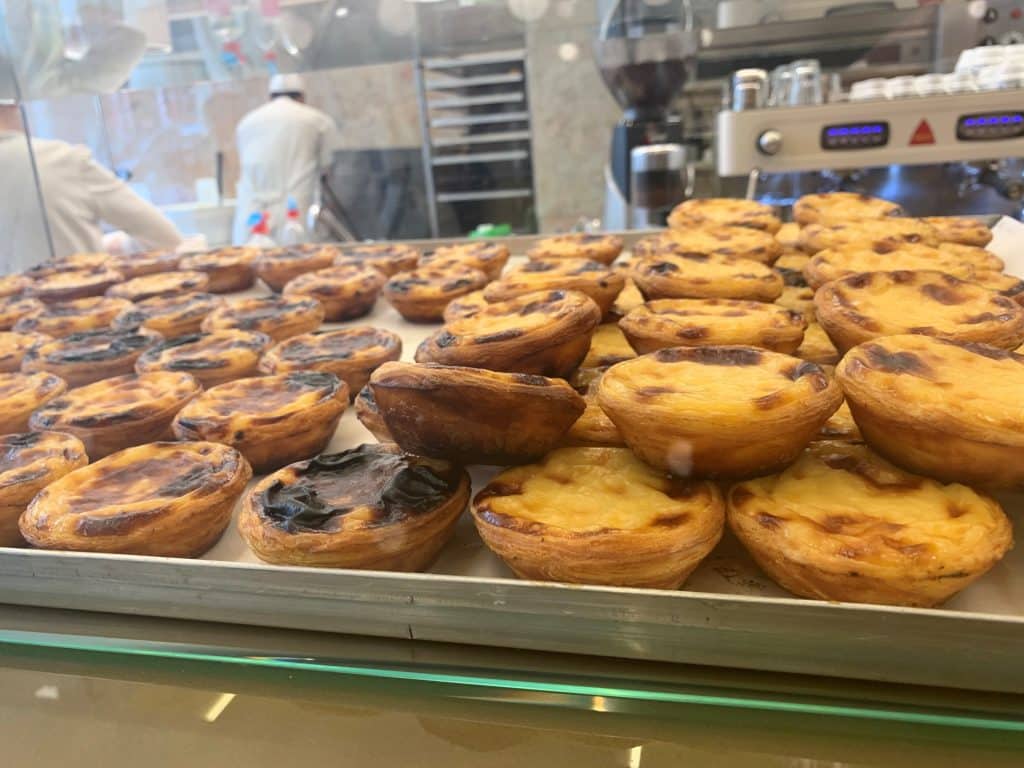

On our first day in Porto, we went straight to the go-to-place in Porto to get Pastel de Nata, Manteigaria. To our surprise, it was all they made. It was already late morning, and the place was still busy. We enjoyed several warm, fresh Pastel de Nata pastries with a lovely cappuccino. We could not have had a better introduction to Pastel de Nata’s. They lived up to their reputation; we were wowed!!! In the subsequent days, several hotels provided these pastries at breakfast. Not once did they come even close to Porto’s Manteigaria. If you can go for the best, do so. If we had tried the hotel versions, we would not have enjoyed them as much.
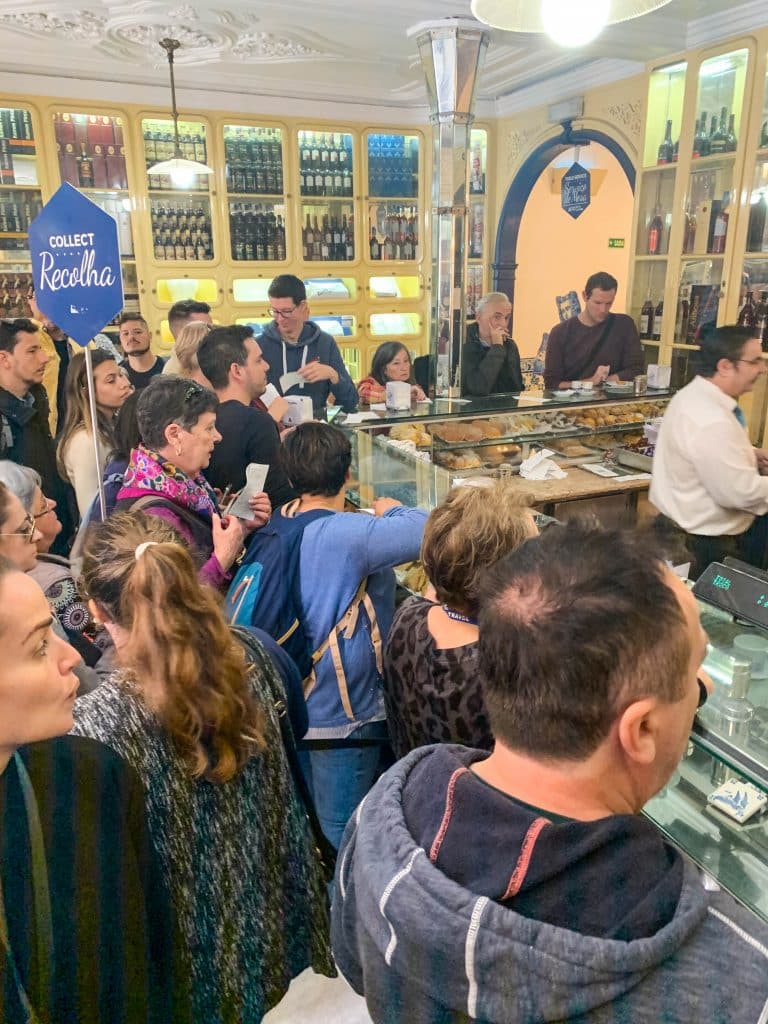

Our Portugal trip ended in Lisbon, the birthplace of Pasteis de Nata, in Belem, a suburb of Lisbon. They are supposedly made a bit differently than the Porto ones. Of course, we had to try them and headed out on our first morning in Lisbon. We saw a substantial line outside as we approached Pasteis de Belem, which opened in 1837. The store inside was packed with people who almost seemed in a panic to get their pastries.
How did the two “Best Places” for these pastries in Portugal match up? Our favorite was the Porto one, Manteigaria. There were very subtle differences, but both were excellent. In Porto, you can watch the bakers hard at work.
So when in Portugal, seek out Pastel/Pasteis de Nata; you won’t genuinely have experienced Portugal until you have!
Our observations during recipe experimentation
Though the ingredients are simple and basic, don’t expect Pastel/Pasteis de Nata to be a slam dunk to replicate. There is a talent for making these little wonders, and we learned that quickly. In experimenting with this recipe, there were quite a few less-than-ideal results. Interesting, most still tasted good; they didn’t look as good. The recipe below will not require you to prepare your puff pastry. In our view, the added work is not necessary. We didn’t feel the difference between store-bought and homemade was worth it. But for those who like to make each element from scratch, we applaud you.
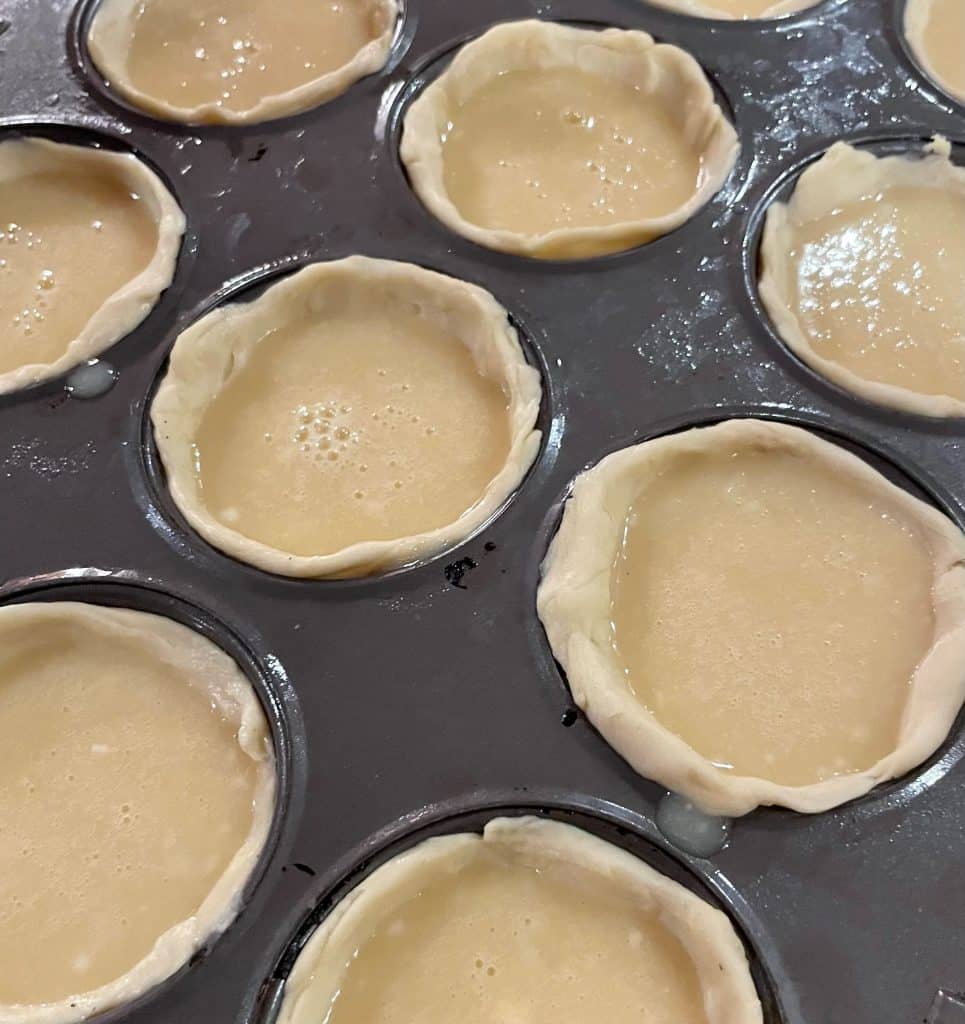

A few upfront observations from our trials and errors.
1. The oven does need to be that hot to get the blisters that these tarts are known for.
2. It was difficult to get those burn blisters even at the high temp as they have in Portugal, but we did get a few in the first batch.
3. The recipe failed both times. We tried halving it, but the custard was not set right.
4. If the sugar mixture cools too much when reheated, it no longer works.
5. The pastry dough needs to be thin. Too thick, it is too doughy.
6. Though they will store for a bit, they were better when served warm.
The Pastel/Pasteis de Nata tarts were delicious, but they won’t be as good as the ones in Portugal. However, you aren’t there, so that takes a considerable part away. But they were close and better than some we got in Portugal hotels.
Interestingly, practice did not make perfect. In the end, the first batch was the best one. They are not difficult to make, but timing is essential. When making Pastel/Pateis de Nata, have it be your only task at the moment. We learned the hard way, and even 15 seconds of not stirring the roux caused problems. Enjoy, and let us know how it worked for you.
Bom Proveito
(Bon Appetit in Portuguese)
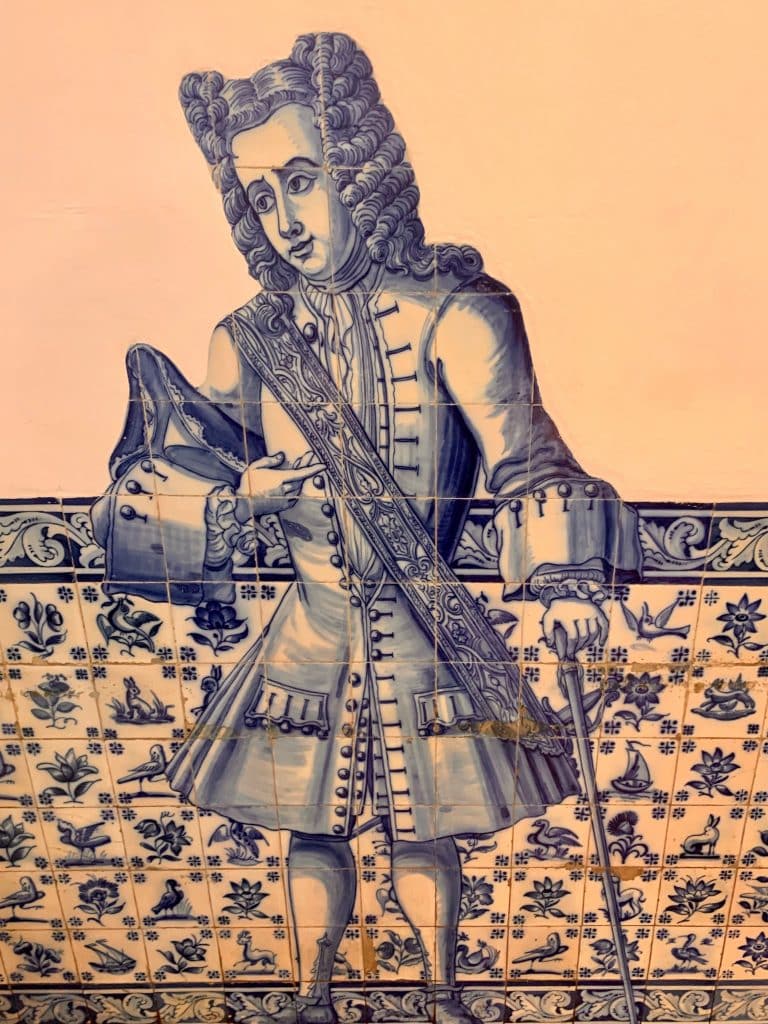

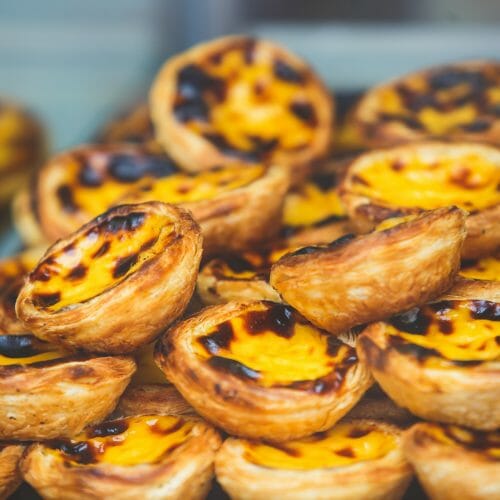

Pastel/Pasteis de Nata (Portuguese Custard Tarts)
Equipment
- 1 Nonstick 12 Muffin Bakeware Tin Would not use ceramic muffin pans
Ingredients
- 1 8.5 oz Pre-rolled Puff Pastry Sheet
- 1 1/3 cup White sugar
- 1/3 cup Water
- 1 whole Lemon, zested into large strips
- 1 Cinnamon Stick Can be substituted with 1/4 tsp of powdered cinnamon
- 1 tsp. Vanilla extract
- 1 1/2 cup Whole Milk
- 1/3 cup Flour (All purpose)
- 1/4 tsp. Kosher Salt
- 6 large Eggs Yolks Whites well separated
- Powder sugar and cinnamon powder for serving
- 1 small bowl Cold Water
- 1 Tbsp. Butter For greasing the muffin tins
Instructions
- Preheat over to 550 degrees.
- Lightly grease the muffin tins with the butter.
- Add the sugar, water, sliced lemon zest, vanilla to a small saucepan. Bring to a boil without stirring. Remove from heat when the temperature reaches 210 degrees Fahrenheit.
- In another cold saucepan combine the milk, sifted flour, and salt and whisk. Cook over medium heat for around 5 minutes, constatnly whisking. May need less depending on pan. When well combined and thickened, remove from heat and allow to cool for 10 mintues

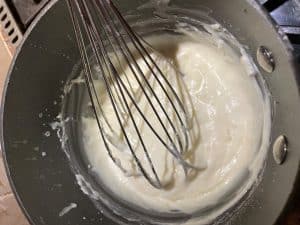
- Once the milk mixture has cooled, whisk in the egg yolks until well combined.

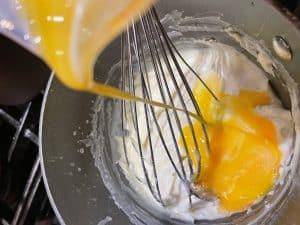
- Remove the cinnamon stick from the sugar syrup and pour into the milk mixture you just made. Mix until well combined. Strain the mixture in a pourable bowl or cup.

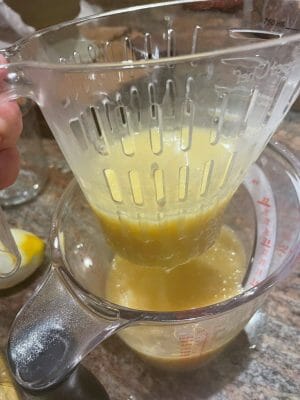
- Lay your pastry sheet on a cutting board. Roll it to thin it more. Score into 12 even pieces of puff pasty dough.
- Place one square into each greased muffin tin. Use the bowl of water to dip your fingers in to mold into form. The top should be 1/8 inch over the edge of the muffin tin.


- Fill each pastry cup 3/4 way with the custard filling.


- Place in the 550-degree oven and bake until the pastry turns golden brown and the custard started to caramelize and blister, about 10-12 minutes.
- Remove from oven and allow to cool for a short time in the muffin pan, 5-10 minutes.
- Remove tarts carefully and if desired dust with cinnamon and powdered sugar. Serve while still warm.

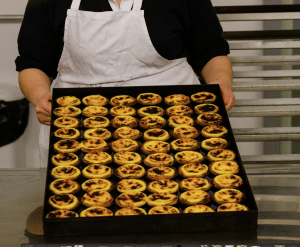
Notes
Nutrition
Photo slideshow of the steps for Pastel de Nata
© 2025 Wanderers Compass All Rights Reserved
Are you considering a Portugal adventure? Check out our Portugal Travel Guide


One of our favorite places to visit in Portugal was Obidos. For more on this historic walled city, check out our blog post, Obidos: Portugal Perfection.
Portugal Photo Gallery

































































Flights, Accommodations, and Everything You Need to Book in One Place
Are you planning a vacation this year? Start your research early to explore your options and find what fits your budget. By booking your own travel, you’ll uncover great deals and have complete control over your itinerary. The links below can be used for all elements of your trip, not just accommodations.
It is essential to price out accommodations on various sites. Expedia is a US-based company, whereas Booking.com is Europe-based. Not all properties appear on both, so it is ideal to check both out. Our personal first choice is Booking.com. If the establishment has a website, check the price there as well. Click the link below to check out hotels and vacation homes in the area. It may be just the motivation you need to start planning that next grand adventure.
Check our other Portugal Posts
Tavira Portugal: Suberb Mix of Tradition & Nature
Uncover the beauty of Tavira, Portugal. Experience its blend of history, authentic culture, and…
April 12, 2025Top 5 European Destinations: Ideal Living Spots for Remote Workers
As part of our guest writers series, we are pleased to welcome Cody Journeyman,…
September 11, 2023Obidos: Portugal Perfection
Obidos is Portugal at its very finest. This walled medieval town with an imposing…
July 19, 2023Douro Valley – The Oldest & Most Beautiful Wine Region in the World
“Portugal has a peaceful feel about it. I sit on the terrace overlooking the…
April 5, 2023Port: A Beloved Portuguese Tradition
Our Eighth Featured Libation of the World Comes from Lovely Portugal When you think…
August 21, 2022Pastel/Pasteis de Nata Recipe
Bringing Home Portugal’s Favorite Pastry One of the most important ways to experience a…
August 16, 2022Ginja de Obidos: Libations of the World
Our first Featured Libation of the World comes from Obidos, Portugal. This iconic Portuguese…
October 9, 2021Do you have a question for us or have a comment?
